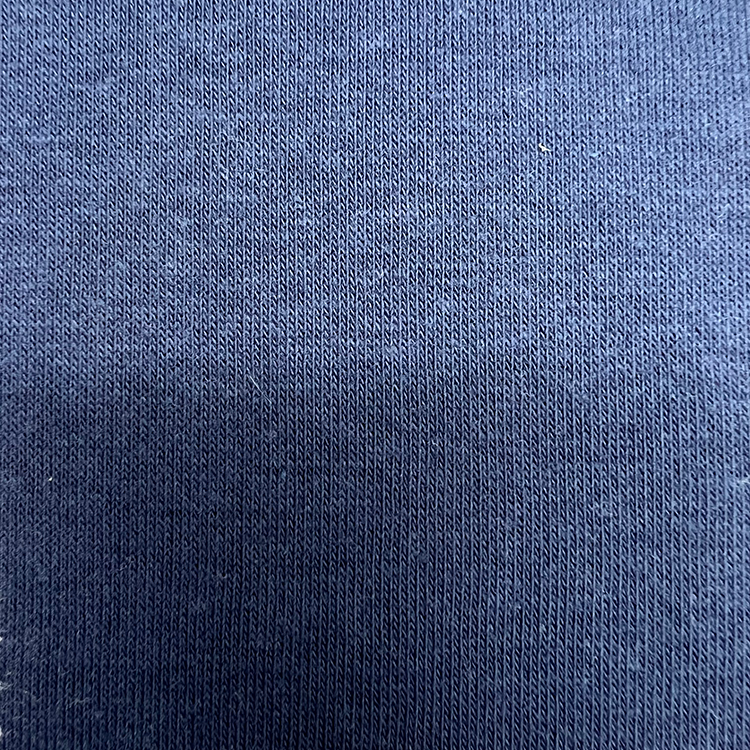When it comes to sourcing custom fleece fabric for apparel or product development, understanding the distinct types of fleece is essential for making informed, cost-effective decisions. While the term "fleece" is often used broadly, there are several specific variations—each with different characteristics in texture, weight, warmth, and application. Among the most common types requested by clients in various industries are polar fleece, microfleece, and Sherpa. Each has its own performance profile, and knowing these details can be the difference between a good product and a great one.
Polar fleece is the most widely used category in the fleece family and is often selected for its warmth, breathability, and affordability. Typically made from polyester fibers, polar fleece comes in a range of weights, from lightweight to heavy-duty, making it highly adaptable for both outerwear and indoor garments. The structure is brushed on both sides, giving it a soft hand feel while retaining loft and insulation. Its durability and ability to retain warmth without excessive bulk make it ideal for jackets, blankets, and even pet accessories. For brands creating customized fleece lines, polar fleece remains a top performer due to its consistent quality and wide acceptance in both retail and industrial markets.
Microfleece, on the other hand, offers a finer, smoother touch and is especially favored for base layers or light pullovers. It is typically lighter than polar fleece and more breathable, though it provides less insulation. Its ultra-soft texture and lower GSM (grams per square meter) make it comfortable for direct skin contact, which is why it's popular in loungewear, baby products, and activewear. From a manufacturing standpoint, microfleece requires precise knitting and brushing techniques to maintain its lightweight feel while ensuring structural stability. When used in custom fleece applications, microfleece is often chosen where comfort and flexibility are priorities.
Sherpa fleece stands apart visually and functionally, resembling the look and feel of real wool. Its fluffy, high-pile texture is usually used as a lining in jackets or as a statement outer fabric in cozy garments. Though it's heavier than microfleece and polar fleece, Sherpa offers excellent thermal insulation and a distinct tactile appeal. However, its bulkier nature means it’s less suitable for streamlined designs or athletic wear. In custom fleece fabric production, Sherpa is often specified when a product demands not only warmth but a luxurious, wool-like aesthetic. It’s also used in premium blankets, fashion accessories, and winter gear.
The distinctions between these fleece types extend beyond feel and appearance; they influence cutting, sewing, and even printing techniques. For instance, polar fleece handles screen printing relatively well, while Sherpa's texture makes surface customization more limited. Microfleece, due to its thin profile, can be tricky to embroider without special backing or techniques. These considerations should be part of the conversation between clients and manufacturers early in the development process to ensure the selected fleece matches the functional and branding goals of the final product.

From an export and supply perspective, each type of fleece also has unique packaging and logistics considerations. Sherpa’s bulk adds to volume in shipping, while microfleece’s lightweight nature allows for more compact packing. For buyers sourcing custom fleece internationally, understanding these practical elements can help in forecasting landed costs and optimizing warehouse space. As a manufacturer and supplier, we often guide clients on how the material choice will impact not just design but the entire supply chain.
Choosing the right custom fleece fabric isn't only about appearance—it's about matching the fabric’s properties to the intended use. Whether you're building a product line of technical outerwear, cozy home textiles, or functional uniforms, understanding the core differences between polar fleece, microfleece, and Sherpa fleece can greatly improve end-user satisfaction and long-term brand value. With years of manufacturing expertise, we help businesses make these smart material choices from the ground up.
If you're exploring fleece options and want to develop products that truly resonate with your market, our team is ready to collaborate with you. From selecting the ideal fleece type to perfecting color, weight, and finishing, we’re here to turn your custom fleece fabric ideas into dependable, market-ready results. Let’s build something warm and lasting, together.

 English
English Français
Français




